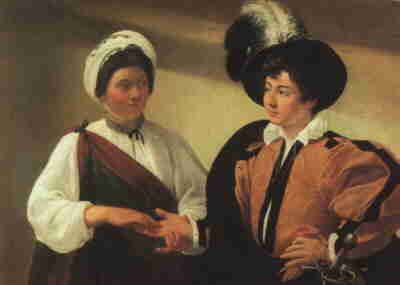
DECORATIONS FOR THE CONTARELLI CHAPEL (above) In 1599 Caravaggio recieved his first major commission for the two paintings of the life of St Matthew which decorate the side walls of the Contarelli Chapel. An alterpiece was added in 1603.
BACK TO MAIN PAGE>
BACK TO CARAVAGGIO>




